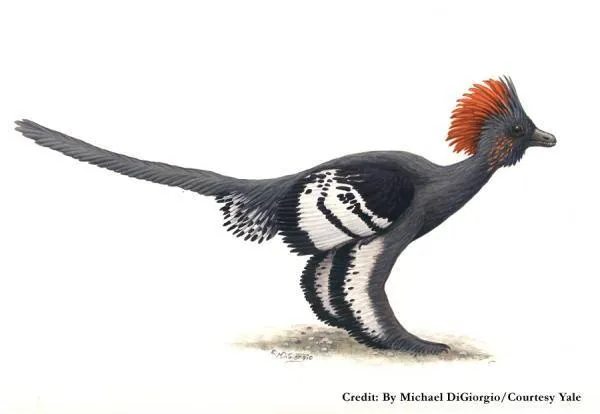Anchiornis huxleyi: Feathered Dinosaur of the Jurassic Era

Introduction to Anchiornis huxleyi
Anchiornis huxleyi is a small, feathered dinosaur that lived approximately 160 million years ago during the Jurassic period. It was discovered in China and is renowned for its remarkably preserved fossil specimens, which provide valuable insights into the early evolution of feathers and flight.
Despite its dinosaurian origins, Anchiornis huxleyi possessed feathers similar to those of modern birds. These feathers likely served a variety of functions, including insulation, display, and possibly limited flight or gliding abilities.
Anatomy and Adaptations
Anchiornis huxleyi had a slender body, long arms, and legs equipped with sharp claws. Its tail was adorned with a fan of feathers, and its wings featured asymmetrical flight feathers, similar to those of modern birds.
Recent studies of Anchiornis huxleyi fossils have revealed intricate details about its coloration and plumage patterns. By analyzing melanosomes preserved within the feathers, scientists have reconstructed its appearance, revealing a striking combination of black, white, and reddish-brown hues.
Significance in Evolutionary History
Anchiornis huxleyi occupies a crucial position in the evolutionary transition from non-avian dinosaurs to modern birds. Its feathered anatomy and potential flight capabilities offer important clues about the origins of avian flight and the development of powered flight in birds.
By studying Anchiornis huxleyi and other feathered dinosaurs, paleontologists gain valuable insights into the evolutionary processes that shaped the diversity of life on Earth. These ancient creatures provide a fascinating glimpse into the distant past and the origins of modern avian biodiversity.
